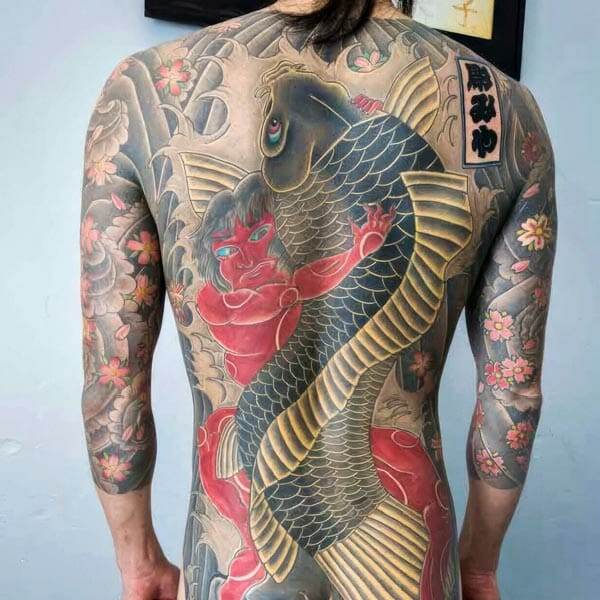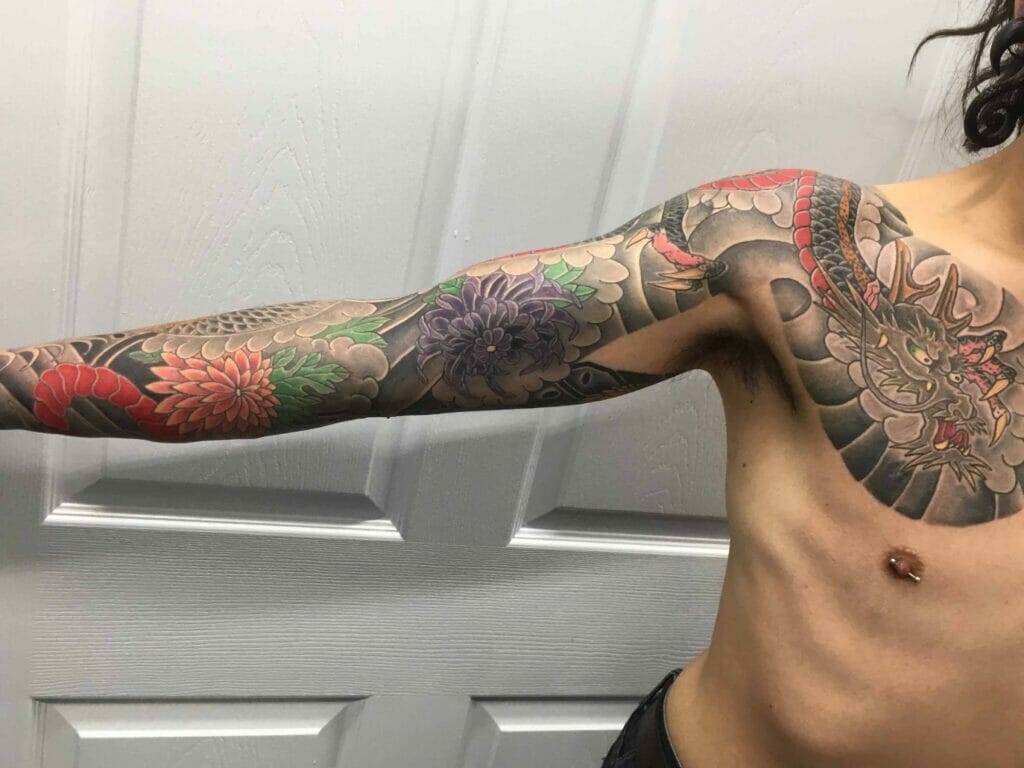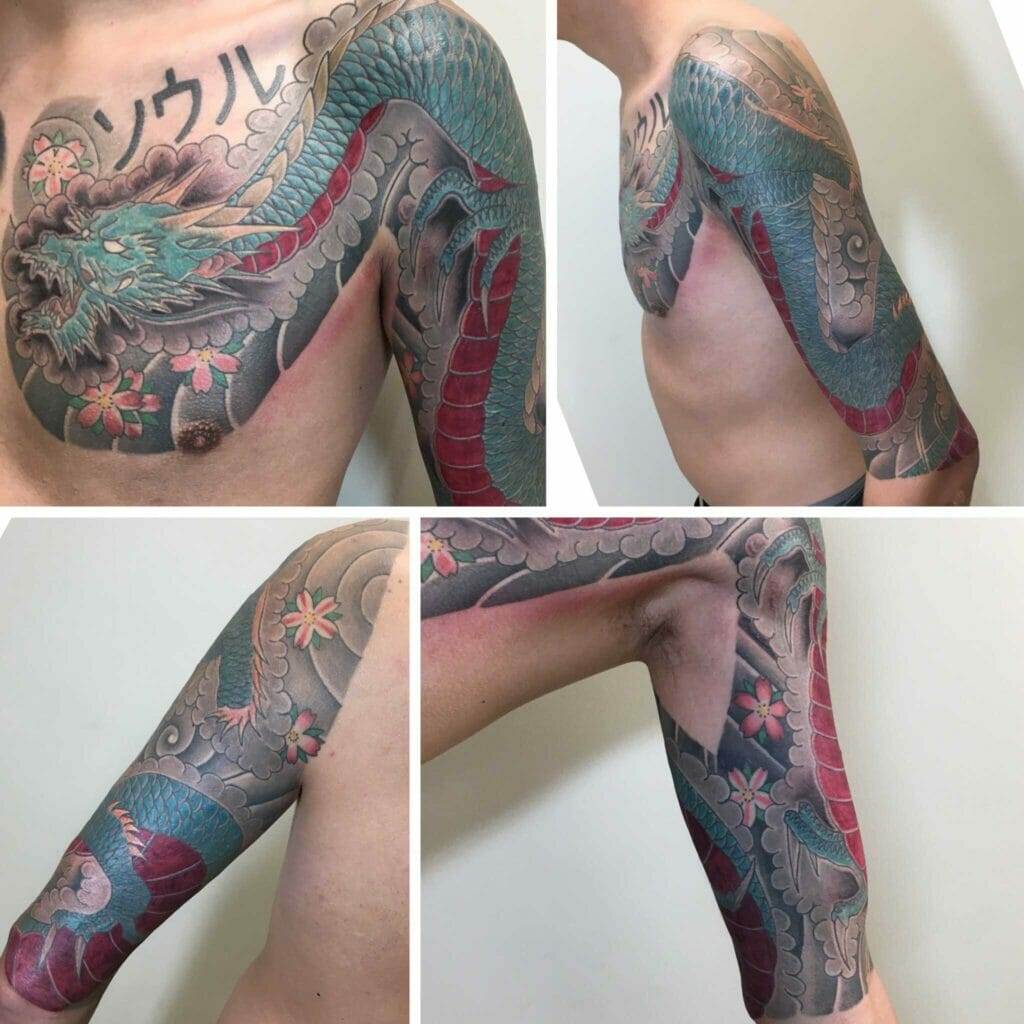Japanese tattooing, also known as irezumi, has a rich history and a deep cultural significance. It is a form of body art that has captivated people around the world with its intricate designs and symbolic meanings. From mythical creatures to gods and legends, Japanese tattoos are a reflection of personal identity and beliefs. In this article, we will delve into the world of Japanese tattooing, exploring its history, techniques, iconography, symbolism, and its role in Japanese culture. We will also examine the influence of Western culture on Japanese tattooing and discuss the challenges and opportunities that lie ahead for this ancient art form.
Japanese tattooing holds a special place in the world of art and culture. It is not just about getting inked; it is about embracing a centuries-old tradition and immersing oneself in the beauty and complexity of Japanese art. The artistry and craftsmanship involved in creating Japanese tattoos are unparalleled, making it a highly respected form of body art. The intricate designs, vibrant colors, and attention to detail make Japanese tattoos truly remarkable.
A Brief History of Japanese Tattooing: From Taboo to Art Form
The origins of Japanese tattooing can be traced back thousands of years. In ancient times, tattoos were seen as a form of punishment and were used to mark criminals. However, over time, tattoos began to evolve from a taboo practice to an art form. During the Edo period (1603-1868), tattoos became popular among the working class as a form of self-expression.
Japanese tattooing gained further recognition during the Meiji period (1868-1912) when Japan opened its doors to the Western world. Westerners were fascinated by the artistry and symbolism of Japanese tattoos, which led to an increased interest in irezumi among both locals and foreigners.
Japanese tattooing has always held a special place in Japanese culture. It is deeply rooted in the country’s history and traditions. In ancient Japan, tattoos were believed to have protective and spiritual powers. They were often associated with religious and mythical beliefs, and were used to ward off evil spirits and bring good fortune. Today, Japanese tattoos continue to be a source of pride and a way for individuals to connect with their cultural heritage.
The Traditional Techniques of Japanese Tattooing: Hand-Poked and Machine Tattooing
Japanese tattooing is known for its traditional techniques, which have been passed down through generations of tattoo artists. There are two main techniques used in Japanese tattooing: hand-poked and machine tattooing.
Hand-poked tattooing, also known as tebori, is the traditional method of tattooing in Japan. It involves using a handheld tool called a nomi, which consists of multiple needles attached to a wooden or metal handle. The tattoo artist dips the needles into ink and then manually punctures the skin to create the design. This technique requires great skill and precision, as the artist must control the depth and angle of each needle insertion.
Machine tattooing, on the other hand, involves using an electric tattoo machine to create the design. This technique was introduced to Japan in the late 19th century and quickly gained popularity due to its speed and efficiency. Machine tattooing allows for more intricate designs and faster completion times compared to hand-poked tattooing.
Both hand-poked and machine tattooing have their own unique characteristics and significance in Japanese tattooing. Hand-poked tattoos are often seen as more traditional and authentic, while machine tattoos offer more versatility in terms of design possibilities.
The Iconography of Japanese Tattooing: Mythical Creatures, Gods, and Legends
Japanese tattoos are known for their rich symbolism and iconic imagery. Common themes and motifs in Japanese tattooing include mythical creatures, gods, legends, flowers, animals, and natural elements. These images are deeply rooted in Japanese culture and hold significant meaning.
Mythical creatures such as dragons, phoenixes, and kirin are often depicted in Japanese tattoos. These creatures are believed to possess supernatural powers and are associated with strength, protection, and good fortune. Gods and legends from Japanese folklore, such as the Shinto gods and samurai warriors, are also popular subjects in Japanese tattooing. These images represent bravery, honor, and loyalty.
Flowers, such as cherry blossoms and lotus flowers, are commonly seen in Japanese tattoos. Cherry blossoms symbolize the transient nature of life and the beauty of impermanence, while lotus flowers represent purity and enlightenment. Animals like koi fish and tigers are also frequently depicted in Japanese tattoos, symbolizing strength, resilience, and determination.
The symbolism behind these images is deeply ingrained in Japanese culture and reflects the values and beliefs of the people. Japanese tattoos serve as a visual representation of one’s personal identity and can convey a wide range of emotions and meanings.
The Symbolism of Japanese Tattoos: A Reflection of Personal Identity and Beliefs
Japanese tattoos hold great personal significance for those who choose to get inked. Each design carries its own symbolism and meaning, allowing individuals to express their personal identity and beliefs.
For many people, Japanese tattoos are a way to honor their heritage and connect with their cultural roots. They serve as a reminder of their ancestry and a way to preserve traditional values and beliefs. Japanese tattoos can also be a form of self-expression, allowing individuals to showcase their personality, interests, or life experiences.
Different types of Japanese tattoos carry different meanings. For example, a dragon tattoo may symbolize power, wisdom, or protection, while a cherry blossom tattoo may represent beauty, femininity, or the transient nature of life. The choice of design and placement can also add additional layers of meaning to the tattoo.
Japanese tattoos are deeply personal and can be a source of empowerment for those who wear them. They serve as a visual reminder of one’s values, beliefs, and personal journey. Japanese tattoos can also be a way to reclaim one’s body and assert control over one’s own narrative.
The Role of Yakuza in Japanese Tattooing: A Complicated Relationship
The Yakuza, Japan’s organized crime syndicates, have long been associated with Japanese tattooing. Historically, the Yakuza used tattoos as a form of identification and to display their loyalty to their gang. Full-body tattoos, known as bodysuits or irezumi, were common among Yakuza members.
Japanese tattoos played a significant role in Yakuza culture, symbolizing strength, loyalty, and honor. The process of getting a full-body tattoo was seen as a rite of passage for Yakuza members, demonstrating their commitment to the gang and their willingness to endure pain.
However, in recent years, the relationship between the Yakuza and Japanese tattooing has become more complicated. The Japanese government has cracked down on organized crime, leading to stricter regulations on tattooing. Many public establishments, such as hot springs, gyms, and public pools, have banned people with visible tattoos from entering.
This has led to a stigma surrounding Japanese tattoos, with many people associating them with criminal activity. Despite this negative perception, Japanese tattooing continues to thrive as an art form and is appreciated by people around the world for its beauty and cultural significance.
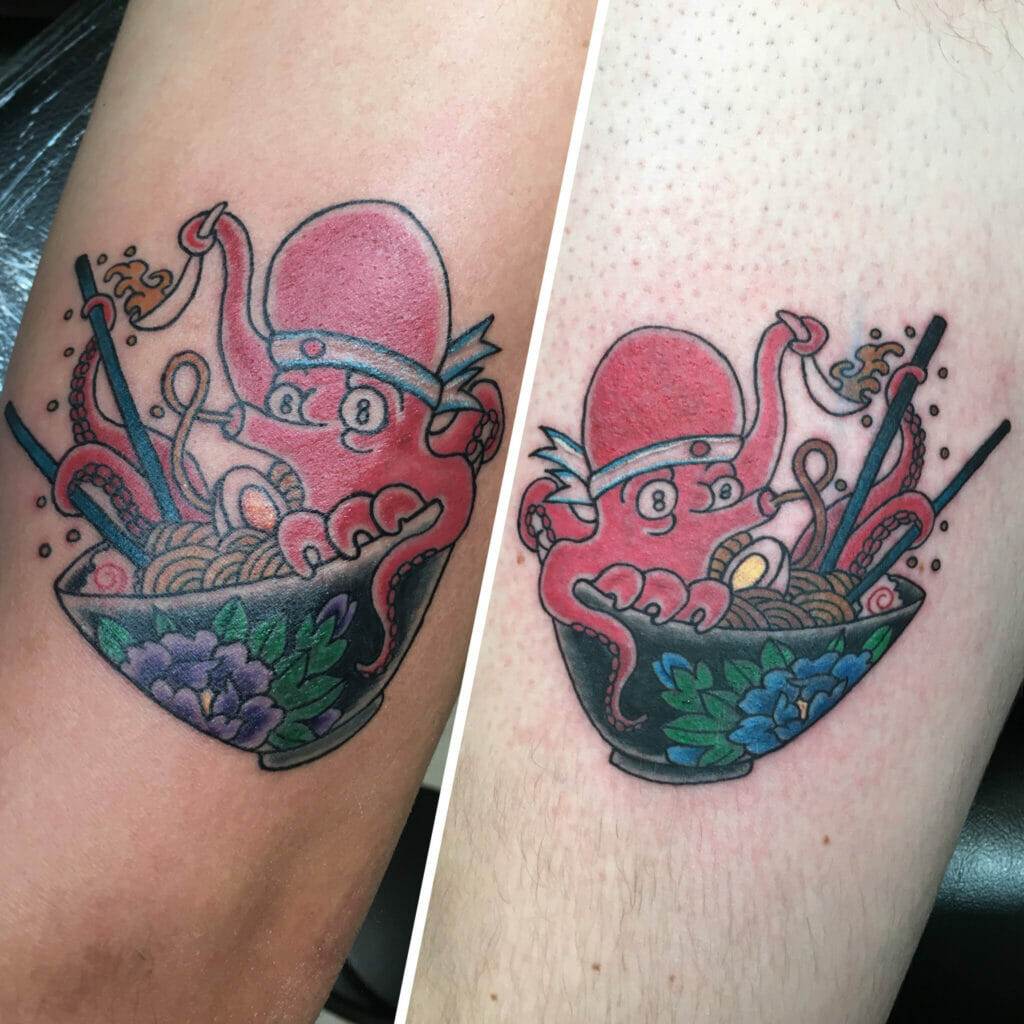
The Modernization of Japanese Tattooing: New Techniques and Styles
Japanese tattooing has evolved over time, adapting to modern techniques and styles. While traditional hand-poked and machine tattooing techniques are still widely practiced, new methods have emerged that offer more versatility and precision.
One such technique is called irezumi-nuri, which involves using stencils and airbrushing to create intricate designs. This technique allows for more detailed and realistic tattoos, as well as the ability to incorporate different colors and shading techniques.
Another modern technique is called neo-traditional Japanese tattooing, which combines traditional Japanese elements with contemporary styles. This fusion of old and new creates a unique aesthetic that appeals to a wider audience.
The modernization of Japanese tattooing has also led to the introduction of new styles and themes. Artists are now experimenting with different genres, such as realism, abstract, and watercolor, while still incorporating traditional Japanese motifs and symbolism.
The Influence of Western Culture on Japanese Tattooing: A New Era of Fusion
The influence of Western culture on Japanese tattooing cannot be ignored. In the late 19th century, when Japan opened its doors to the Western world, Westerners were fascinated by Japanese tattoos and began incorporating elements of Japanese art into their own tattoo designs.
This fusion of Western and Japanese tattooing styles gave birth to a new era of tattoo artistry. Western artists started incorporating traditional Japanese motifs, such as dragons and cherry blossoms, into their designs, while Japanese artists began experimenting with Western techniques and styles.
Today, the fusion of Western and Japanese tattooing styles is more prevalent than ever. Artists from around the world are drawing inspiration from both cultures, creating unique and innovative designs that push the boundaries of traditional tattooing.
This fusion has also led to a greater appreciation for Japanese tattooing in the global art world. Japanese tattoos are now recognized as a legitimate form of art and are exhibited in galleries and museums worldwide. The influence of Western culture has helped elevate Japanese tattooing to new heights, allowing it to be appreciated by a wider audience.
The Art of Japanese Tattooing: A Form of Expression and Empowerment
Japanese tattooing is not just about getting inked; it is a form of artistic expression and empowerment. The process of getting a Japanese tattoo involves a deep level of collaboration between the artist and the client. The artist takes the client’s ideas, beliefs, and personal experiences and transforms them into a visual representation on their skin.
Japanese tattoos can be a source of empowerment for those who wear them. They serve as a reminder of one’s strength, resilience, and personal journey. Japanese tattoos can also be a way to reclaim one’s body and assert control over one’s own narrative.
The artistry and craftsmanship involved in creating Japanese tattoos are unparalleled. Tattoo artists spend years honing their skills and perfecting their craft. Each tattoo is a unique work of art, meticulously designed and executed with precision.
The Future of Japanese Tattooing: Challenges and Opportunities Ahead
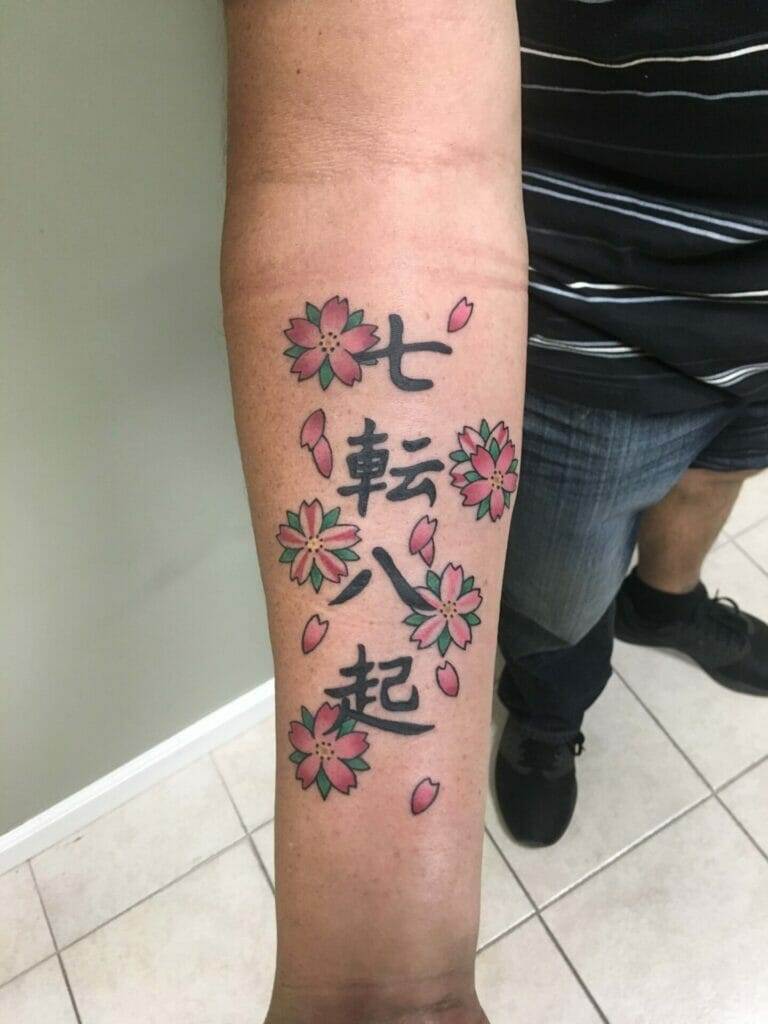
While Japanese tattooing continues to thrive as an art form, it also faces several challenges in the modern world. One of the main challenges is the stigma surrounding tattoos in Japan. Many public establishments still ban people with visible tattoos from entering, which can make it difficult for tattoo artists to practice their craft.
Another challenge is the increasing commercialization of Japanese tattooing. With its growing popularity, there is a risk of diluting the art form and losing its cultural significance. It is important for artists to stay true to the traditions and values of Japanese tattooing while also embracing new techniques and styles.
Despite these challenges, there are also many opportunities for growth and development in Japanese tattooing. The global interest in Japanese culture has created a demand for authentic Japanese tattoos, providing artists with new opportunities to showcase their skills and expand their reach.
The future of Japanese tattooing lies in embracing its rich history and cultural significance while also adapting to the changing times. It is important for artists to continue pushing the boundaries of traditional tattooing while staying true to the values and symbolism that make Japanese tattoos so unique.
Embracing the Beauty and Complexity of Japanese Tattooing
Japanese tattooing is a form of art that has captivated people around the world with its beauty and complexity. From its ancient origins to its modern evolution, Japanese tattooing has played a significant role in Japanese culture and continues to be a source of inspiration for artists and individuals alike.
The symbolism and iconography of Japanese tattoos reflect personal identity, beliefs, and cultural heritage. They serve as a visual representation of one’s values, experiences, and journey through life. Japanese tattoos are not just about getting inked; they are a form of artistic expression and empowerment.
As we look to the future, it is important to embrace and appreciate the beauty and complexity of Japanese tattooing. It is an art form that has stood the test of time and continues to evolve and adapt to the changing world. By understanding its history, techniques, symbolism, and cultural significance, we can gain a deeper appreciation for this ancient art form and the artists who bring it to life.

